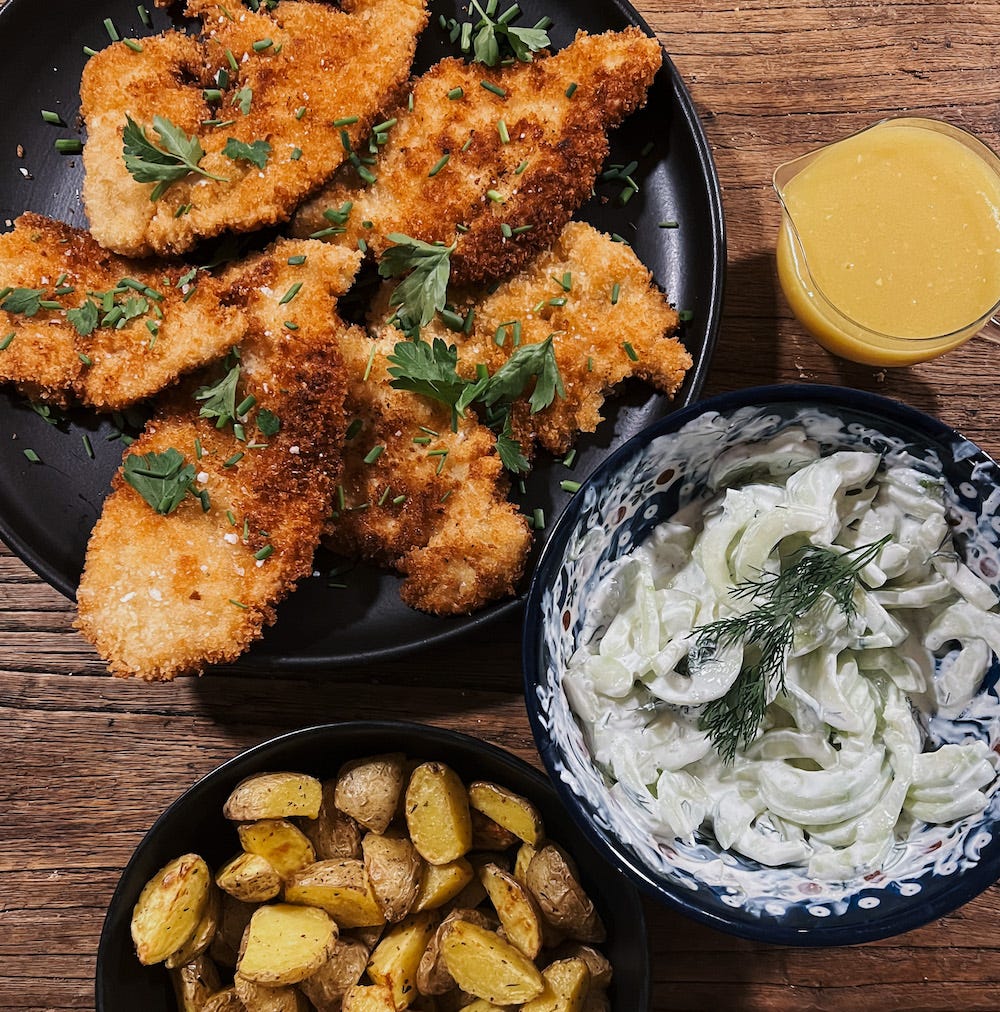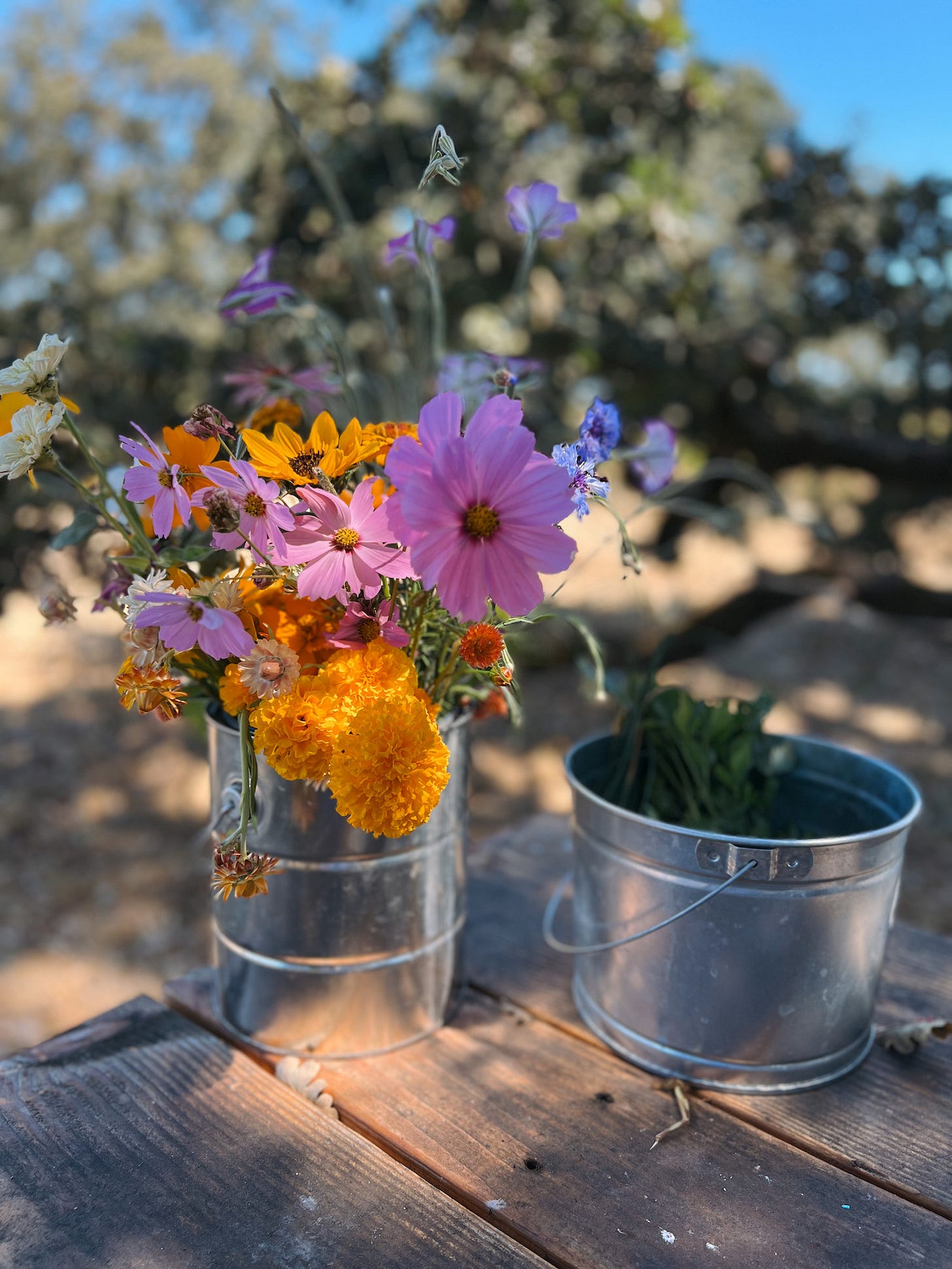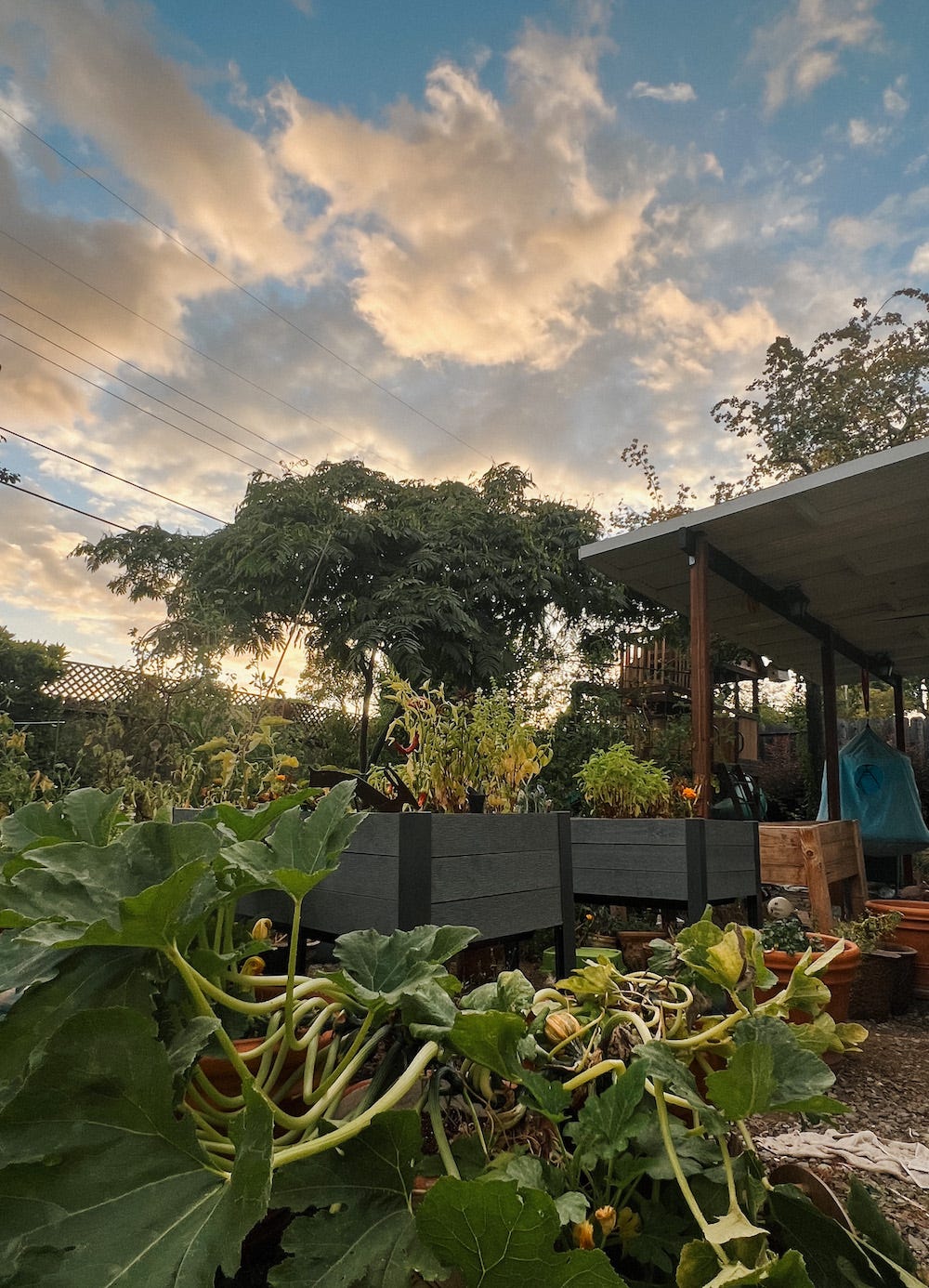Greetings! The Ancestral Homekeeper is a newsletter dedicated to slow & simple living for all of us. I’m Kristina, and I believe that the way we shape our lives at home will be reflected in our society at large. By blending the wisdom of our ancestors with contemporary thoughts on mental health, self nurturing, and social justice, we can find the path to changing our world. New letter is out every Sunday!
The overcast sky was dense with both storm clouds and a swiftly running fog that moved in from the coast. I peered up to see it, but all I could glimpse was the soft glow where the moon should be. Not every full moon is always visible to us, though I take comfort in knowing it is still there. I turned back to the house, padding silently in my bare feet. I turned one last time to say goodnight and gasped. The clouds and fog had parted just enough so that the moon shone down upon me, swollen and shimmering in her golden ivory magnificence. I took a deep breath and whispered hello, and then thank you. Moments later, she was again shrouded by the clouds, and I returned to my warm house.
Today marks the beginning of October, the beginning of spooky season. The season some refer to as the time of the thinning veil, when communication between this world and the Beyond is more permissible. The howling of wolves and the power of the moon echo through our minds as we go about preparations for costumes and trick-or-treating with the children. Autumn settles in for good, and the spiders come out in force.
The Halloween festivities of our modern era have obscured the religious and ancestral traditions of those who have gone before us. (This is mainly true from the perspective of white Western culture — Mexico’s Día de los Muertos shows that many cultures are still deeply connected to the traditions of the past.) The truth is, I never much cared for Halloween, until I started treating it as an opportunity to commune with my ancestors. I prepare foods from my various lines, everything from latkes, challah, and schnitzels to Irish stew and Scottish shortbread, and quite literally leave out a plate for them in the garden. Perhaps my German Catholic relatives might blanch at this if they knew, but it serves as a culmination of all of my religious research and learning over the decades.
Not too many people know that I actually went to university for theology and religious studies. In many ways, my whole life has been a quest for understanding spirituality and religion. When I was 13, I refused to go through confirmation at my Catholic elementary school with the rest of my grade. I turned to studying Buddhism instead, gobbling up all the books and incense my local new age bookstore could offer. This lasted until high school, when I flirted with pagan witchyness that was heavily influenced by repeated viewings of The Craft. (I know I am not the only one who went through this phase!) I then settled into a comfortable agnosticism, which lasted until Pope John Paul II’s death in 2005. I felt a bewildering sadness that I didn’t understand at the time, though I now know it was born of a longing for ritual and community. This was something I’d only ever known in the folds of the Catholic church — so I found the progressive parish of St. Ignatius on the University of San Francisco campus, and finally went through the process of confirmation and university admittance. Perhaps now spirituality and religion, and this great longing I had always felt, would make sense, now that I was back in the faith of my childhood.
It was only once I delved into my studies at USF, taking classes with titles like Islamic Feminist Ethics, Homosexuality and the Bible, Neurotheology, and Jewish-Christian Relationship, that I began to look to my family history for guidance. My father had mentioned in passing a few times that his mother was Jewish, but that he’d mostly been raised to celebrate the Christian heritage of his father. The history of the Jewish people was always something separate from me, and I didn’t fully comprehend that I was, in fact, ethnically Jewish. Unsurprisingly, twenty-five percent of my DNA originates from the Ashkenazi Jews of Europe. I kept my distance from this fact, preferring to study Judaism, Christianity, “world religions,” and new-age spirituality from a more academic lens.
I developed a particular interest in neurotheology, which looks at the science of our brains as it pertains to religion. I became obsessive about the bicycle spoke metaphor: if you place all religions on the outside of a bicycle wheel, they grow closer together and more similar as they travel down the spokes to the center, where the contemplative practices of each faith reside. Studies show that when we look at the human brain when engaged in deep contemplative practice — whether it is a meditating Buddhist monk, a praying Catholic nun, or a dancing Sufi mystic — the same areas of the brain light up, regardless of the particular faith tradition. This shows us it’s not the form that matters so much as the practice itself. Letting the mind go to that still and rapturous place is what unites the possibilities of greatness within our religions.
For so long, I sought what is true. All religions could and should be respected and valued, studied from an anthropological perspective, and be fully welcomed by society. This is what I believed, and told anyone who would listen. But secretly, I longed to know the Truth. What was the most true religion? What was the faith that would strike me as the most accurate? By looking at what the different faith traditions had in common, I thought I could suss out which one had the most “accuracies.” This would be the one that would ring most true for me.
Neurotheology taught me that there is no objective truth, even to myself. My soul does not care about the outward expression, so long as it enables me to access the deepest parts of my mind. It is there that we can connect with our ancestors, with our guides, with the Universe/God/Spirit/Goddess/Source. When we look to the universal truths of religions and faith traditions, we find the values of love, kindness, honesty, generosity, and interconnectedness. If we can adopt these as our personal credos, and make time to let our minds go still, it doesn’t much matter what the outward expression looks like to other people. Rituals are free to be reinterpreted and reincorporated, so long as they serve our values and aims.
Lately, I have focused on studying the rituals and practices of all my diverse ancestry, learning alongside my children and incorporating some of our shared familial customs into the rhythm of our holidays. We pull from Judaism, from the pagan beliefs of our Celtic and Norse forbears, from the all-pervasive Christianity that defines much our our current Western society. These outward faith expressions are not “the right way” to do anything, but they provide us a link to the past, to our shared history. They serve as a way of connecting directly with our diverse ancestry and the practices that kept them in touch with the unseen.
The magic of this season feels undeniable to me. Humans have always known this was a time for bonfires and stories, to draw close and tune in. We have always adapted rituals to better suit the people they serve and the times they live in. By pulling on these threads from the past, and weaving them together, we can finally come back to ourselves and create a deeper meaning that becomes our own truth.
The moon rises again, and I am home.








